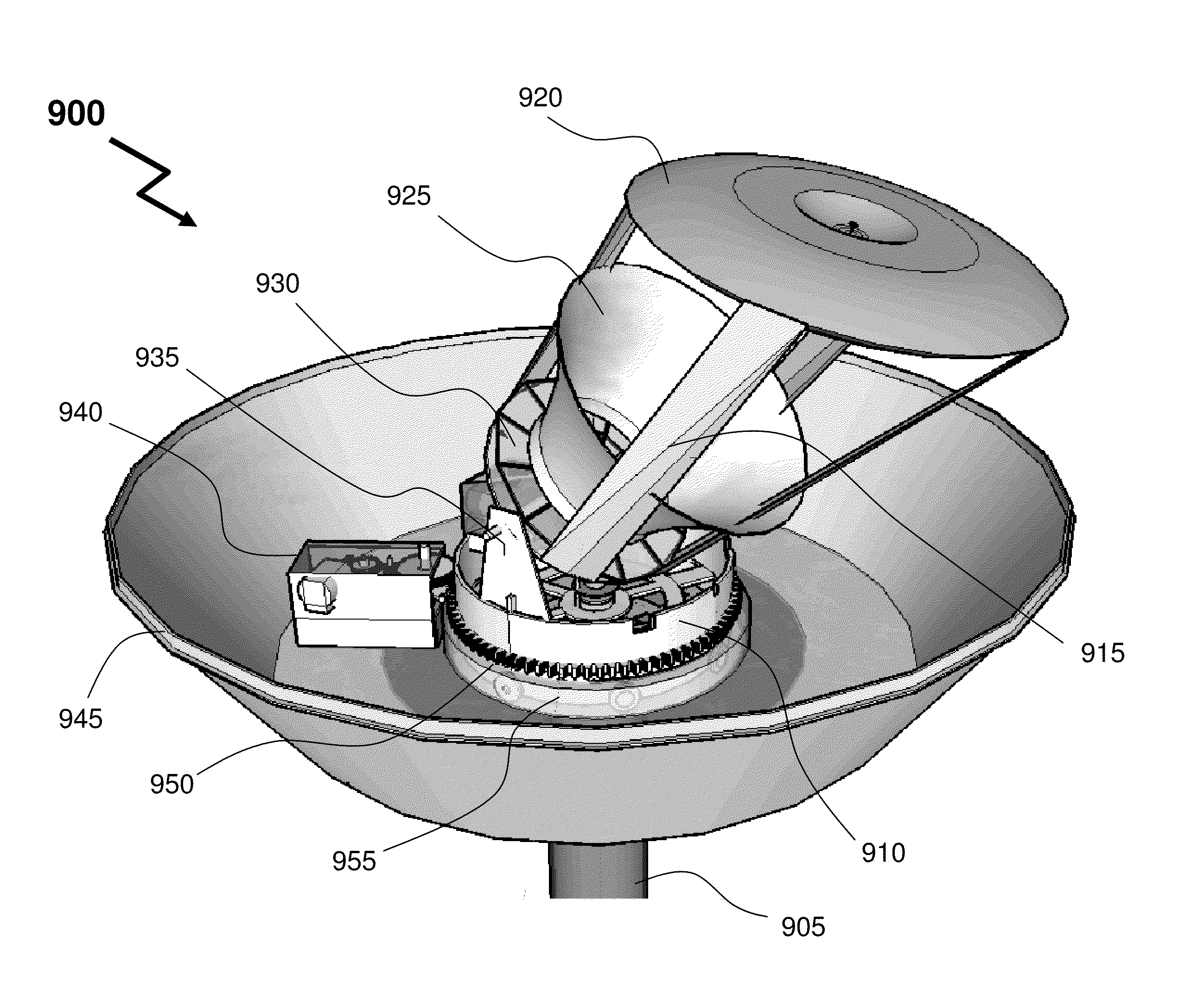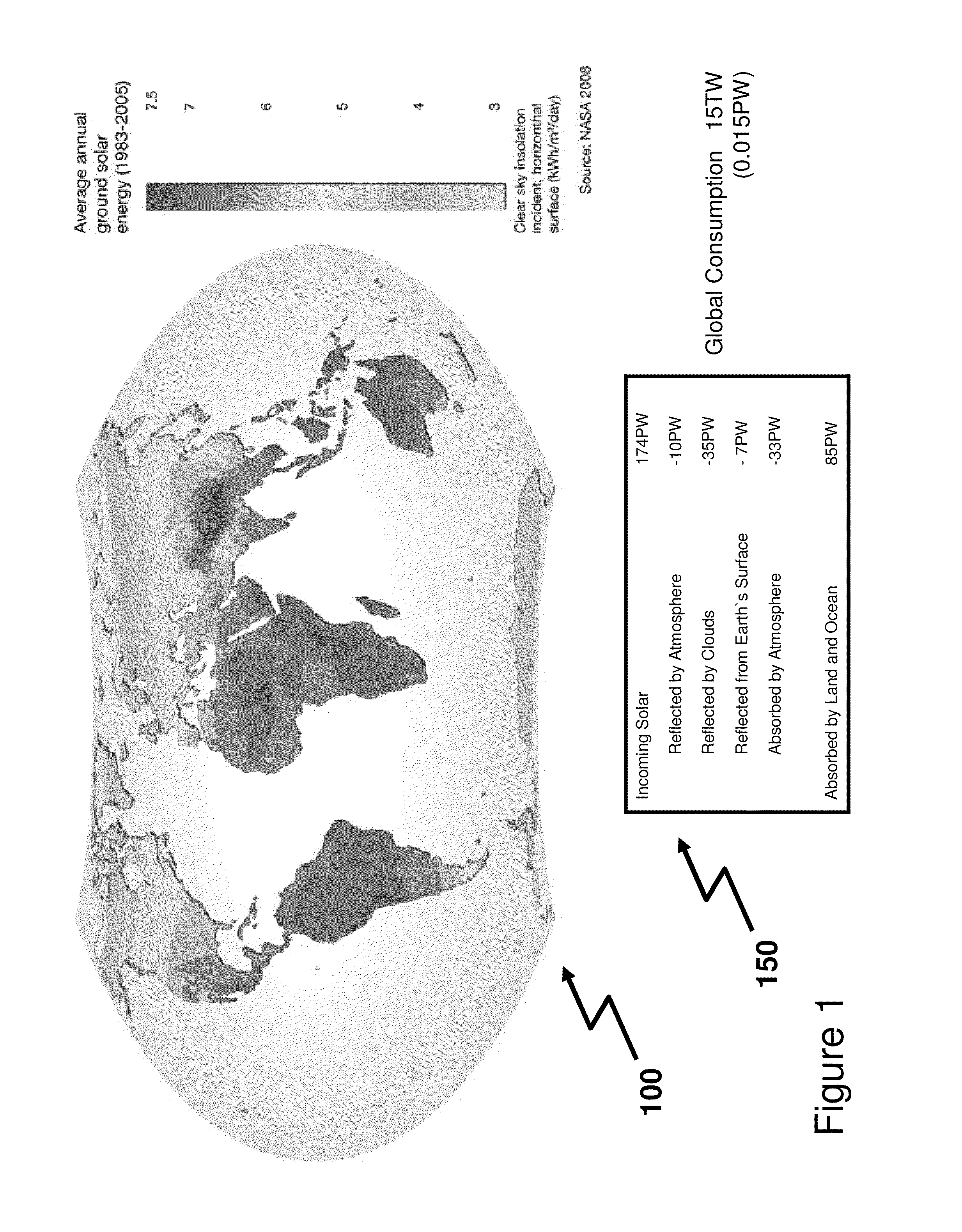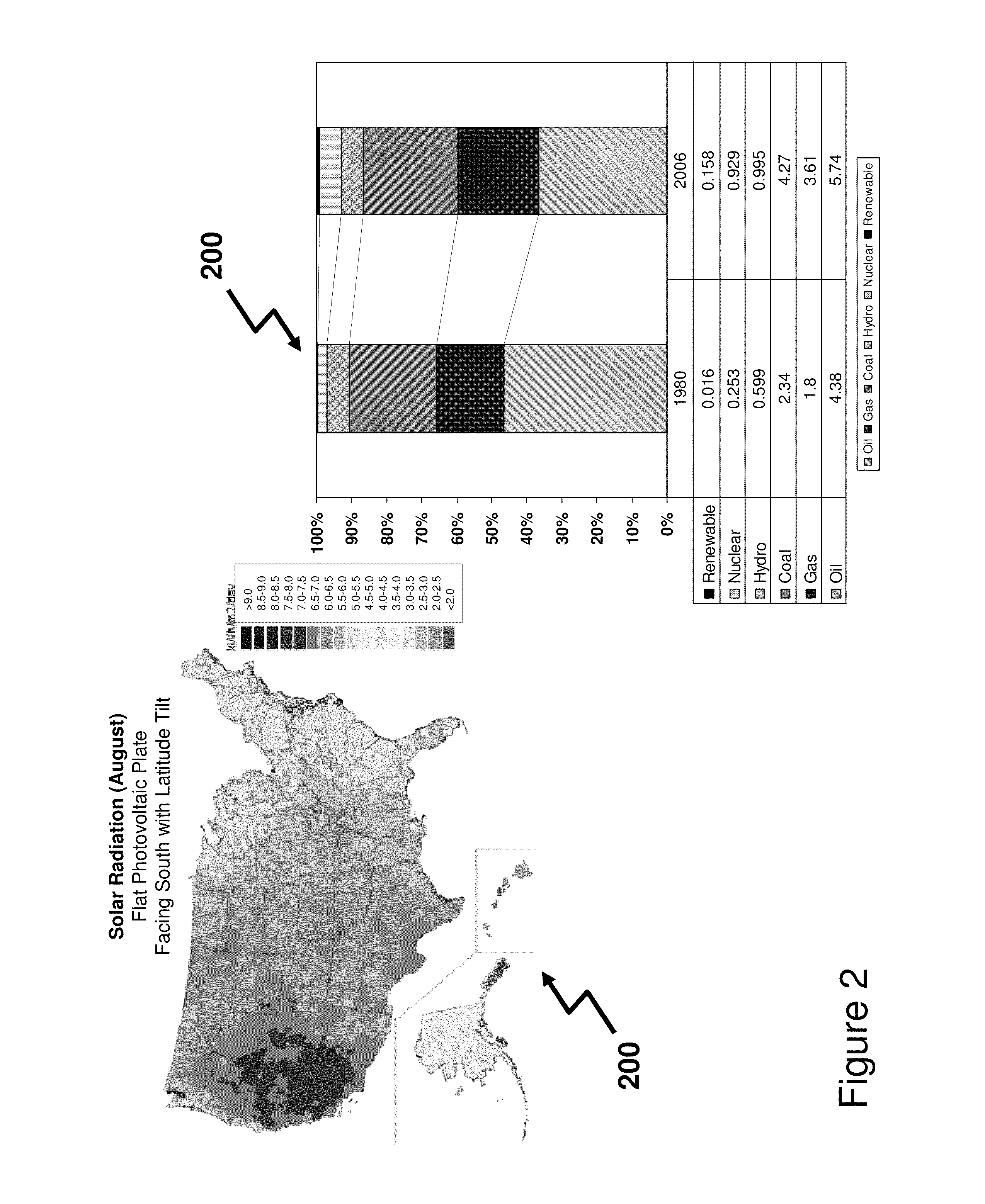Solar Power Generator
a solar power generator and solar energy technology, applied in the field of solar energy, can solve the problems of increased efficiency, increased cost, and limited penetration to very few commercial applications, and achieve the effects of reducing the requirement for tracking systems, improving performance, and increasing the effective number of suns
- Summary
- Abstract
- Description
- Claims
- Application Information
AI Technical Summary
Benefits of technology
Problems solved by technology
Method used
Image
Examples
Embodiment Construction
[0062]The present invention is directed to providing a compact solar power concentrator with chronological tracking without requiring active thermal management.
[0063]Reference may be made below to specific elements, numbered in accordance with the attached figures. The discussion below should be taken to be exemplary in nature, and not as limiting of the scope of the present invention. The scope of the present invention is defined in the claims, and should not be considered as limited by the implementation details described below, which as one skilled in the art will appreciate, can be modified by replacing elements with equivalent functional elements.
[0064]Illustrated in FIG. 7 is a solar power generator 700 according to an embodiment of the invention. As shown solar power generator 700 comprises a mounting post 710, lower external body 720, upper external body 730, and lid 740. Upper external body 730 and lid 740 are transparent to at least significant portion of the wavelength sp...
PUM
 Login to View More
Login to View More Abstract
Description
Claims
Application Information
 Login to View More
Login to View More - R&D
- Intellectual Property
- Life Sciences
- Materials
- Tech Scout
- Unparalleled Data Quality
- Higher Quality Content
- 60% Fewer Hallucinations
Browse by: Latest US Patents, China's latest patents, Technical Efficacy Thesaurus, Application Domain, Technology Topic, Popular Technical Reports.
© 2025 PatSnap. All rights reserved.Legal|Privacy policy|Modern Slavery Act Transparency Statement|Sitemap|About US| Contact US: help@patsnap.com



